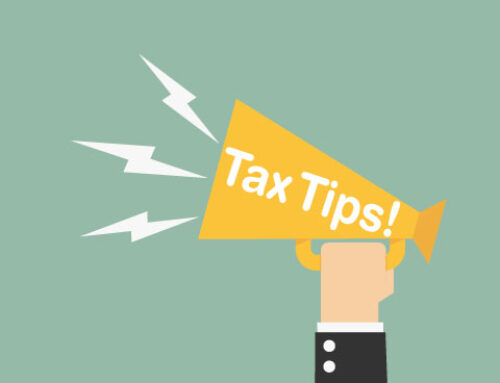Incorporating a new business can be a difficult task especially if you have never done it and are not familiar with the process. The following information is a guide and does not replace legal advice.
Steps to incorporating
Incorporating your company federally is a five-step process.
- Step 1: Deciding how you want to name your corporation
- Step 2: Completing articles of incorporation
- Step 3: Establishing the initial registered office address and first board of directors
- Step 4: Filing the appropriate forms and paying the fee
- Step 5: Processing your application
- Completing provincial and territorial registration and other requirements
Note
The information provided is to assist you to complete the incorporation process quickly and accurately. It is not intended to replace legal advice. Consider consulting a lawyer or another professional advisor to ensure that the specific needs of your corporation are met.
Step 1: Deciding how you want to name your corporation
Before you begin the process of incorporation, you need to name your corporation.
Every corporation must have a name; this is known as a corporate name. The name must be distinctive and it must not be misleading or likely to be confused with names used by other organizations and businesses. In general, a corporate name is distinctive if it does not make those who encounter it think of another organization or business. Corporations Canada applies very rigorous standards when granting names.
- If you want a numbered name (this is still considered a corporate name) for your company, proceed to step 2. The process for obtaining a numbered name for your company is part of the process of completing the articles of incorporation.
- If you want to choose a corporate name, you first need to conduct a Nuans name search. Note that a Nuans name search report for the proposed name must not be more than 90 days old.
- You can obtain pre-approval of your corporate name before you file your articles of incorporation, or request approval at the time of filing.
Step 2: Completing articles of incorporation
This step establishes the structure of your corporation. However, you can apply to change the structure of your corporation once you are operating.
Your articles of incorporation will need to be signed by the incorporator(s). If an incorporator is a company or other incorporated body, the articles must be signed by an individual authorized by that body. Note that changes to the approved articles can only be made by amendment. The fee for amending articles is $200.00.
You can file your articles of incorporation through the Online Filing Centre or you can complete Form 1 – Articles of Incorporation (see Corporations Canada forms).
If you complete Form 1, you need to state:
- your proposed corporate name (leave a blank space if you want to proceed with a numbered name)
- your corporation’s province or territory in Canada
- your share structure and any restrictions on share transfers (see The share structure of your corporation)
- your corporation’s number of directors
- any restrictions you might want to set for your business or business activities
- any other provisions (See Item 7: Other provisions, if any).
Language of the articles
The articles can be in the official language of your choice. This means they may be:
- in a format that uses either official language (in French or in English)
- in a format that employs both English and French, or
- in a fully bilingual format, using both official languages equally.
Step 3: Establishing the initial registered office address and first board of directors
The registered office address is where you must keep your corporate records and where official documents will be served on the corporation. Choose an address where you will be sure to receive any documents that are sent there since, legally, they will be assumed to have been received by the corporation. Information about the registered office address is corporate information, and as such, is required to be made public.
Make sure the directors meet the eligibility requirements (See Director requirements). Information about directors is corporate information, and as such, is required to be made public.
Note
For more information on public disclosure for both the registered office address and the director, see Public disclosure of corporate information.
If you incorporate online, this step is part of your incorporation process. If you complete Form 2, you need to state:
- the same corporate name you provided in your articles of incorporation (leave it blank if you want to be assigned a numbered name)
- the street address of your corporation’s registered office in Canada (include a mailing address if you would like to receive unofficial documents at different address)
- the first name, last name and address of each director (indicate whether or not each director is a resident Canadian).
Adding the director’s information allows Corporations Canada and others to send notices to the directors if required. As with your articles of incorporation, the form will need to be signed by the incorporators.
Note
If you need to correct information on a form that you have already filed, see Policy on requests for corrections of Forms 2,3,6 and 22 – Canada Business Corporations Act.
Step 4: Filing the appropriate forms and paying the fee
Corporations Canada offers several methods of filing (see How do I file my application under the Canada Business Corporations Act (CBCA)?). Your request for a certificate of incorporation, sent to Corporations Canada, must also include the filing fee (see Services, fees and turnaround times – CBCA).
Corporations Canada does not acknowledge receipt of applications, except for online applications.
Don’t forget that you have to fulfill other obligations once you are incorporated (see Completing provincial and territorial registration and other requirements).
Step 5: Processing your application
Corporations Canada will make sure your articles of incorporation have been properly completed and that the proposed name is acceptable. An application is complete if:
- it includes all necessary documents
- the forms are complete and signed, and
- the fee is included.
If any of these things are missing, your application will be considered incomplete. Occasionally, Corporations Canada receives an application for a corporation that does not actually exist in the legal sense (for ex., it is dissolved or has moved to another jurisdiction). In those cases, the application is considered invalid. If your application is complete and valid, with no additional information needed, you will receive your certificate of incorporation within the turnaround time (see Services, fees and turnaround times – CBCA) for your method of filing.
Corporations Canada sometimes needs more information for your submitted application. This additional information is needed to properly determine whether your application meets the requirements of the legislation. For example, Corporations Canada often requires more information about the corporate name you are proposing.
Your certificate of incorporation will show the corporate name, the corporation number and the date of incorporation, along with your articles of incorporation. You will also receive a corporation information sheet that includes your corporation key. When used with a corporation number, a corporate name or a business number, a corporation key allows you to carry out certain online transactions.
The date of incorporation is the date on which Corporations Canada receives the articles of incorporation and the fees. For administrative purposes, you can request a later incorporation date when you file your articles. Since it is mandatory for certain legal elements to be written with a period (Ltd., Inc., Corp. and S.A.R.F.), Corporations Canada will add one if it is not already included in a proposed corporate name.
Note
For details on the public availability of corporate information, see Public disclosure of corporate information.
There are steps to follow if there are problems with your application, depending on what the problem is.
| Incomplete or invalid application | Complete application, additional information needed | |
|---|---|---|
| What Corporations Canada does | Returns your application with a letter that tells you what is missing or explaining why it is invalid. | Returns your application with a letter that tells you what additional information or documents are needed. |
| What you need to do | Send a complete and valid application within four months of the date of our letter. | Resend your complete application with the additional information requested or documents within four months of the date of our letter. |
| What happens if you don’t | Your application will be considered abandoned. | Your application will be considered abandoned. |
| What happens if you do | If your application is accepted, you will receive a certificate that is effective as of the date Corporations Canada received your complete application or any later date you requested. | If your application is accepted, you will receive a certificate that is effective as of the date Corporations Canada received your complete application or any later date you requested. |
| Refund | If your application was abandoned, your fee will be refunded. | If your application was abandoned, your fee will be refunded. |
Completing provincial and territorial registration and other requirements
You may need to complete some other steps depending on the municipality and province in which your corporation carries on business.
Provincial and territorial registration
You will likely have to register your corporation in any province or territory where you carry on business. Registration is different from incorporation. A corporation may incorporate only once, but it may register to carry on business in any number of jurisdictions. Carrying on business in a province or territory can mean that, in that region, you:
- run a business
- have an address, a post office box or phone number, or
- offer services or products in order to make a profit.
Provinces and territories often require corporations to register within a few weeks after incorporation. You might have to pay a fee for registration. A good approach is to contact the local corporate law administration office in each province or territory where you plan to do business to determine their filing requirements.
To save you time and simplify your paperwork, Corporations Canada has a Joint Online Registration System through agreements with some provinces. These agreements allow corporations that incorporate online to also apply for provincial registration online.
Business number
The Business Number (BN) is part of a unique federal government numbering system that identifies your business and the accounts you maintain with the Canada Revenue Agency (CRA). Generally, CRA uses a BN for the following business accounts:
- Goods and Services Tax or Harmonized Sales Tax (depending on your province)
- payroll deductions
- corporate income tax
- import and export duties and taxes
When Corporations Canada incorporates your business, CRA is asked to issue a BN for your corporation. CRA will then register your corporation and send you a letter confirming your BN and the accounts registered, as well as a summary of the information you provided.
The booklet RC2. Your Business Number and Your Canada Revenue Agency Program Accounts will give you more information.
Permits and other requirements
You may have to fulfill a number of other requirements in order to carry on business. For example, some municipalities ask you to obtain a permit to carry on business in the municipality. You may also need a provincial permit to carry on business in a particular sector. For example, you may need a liquor permit to serve alcoholic beverages if you operate a restaurant.
Corporations Canada does not provide information on such requirements. Instead, we suggest you check with the appropriate municipal, provincial, territorial or federal government agencies, as well as professional organizations.
Additionally, consider consulting the BizPal website. BizPal is an online service that will help you generate a personalized list of the business documents required by the government agencies you may have to deal with (local, provincial, territorial and federal) in order to start up or grow your business. If your business is already operating, BizPal can help you verify that you have all the correct permits and licences.
***The information on this blog and website is for educational purpose only and not to be relied upon as professional advice or used for planning without first seeking professional advice. Information is subject to change without notice.***




